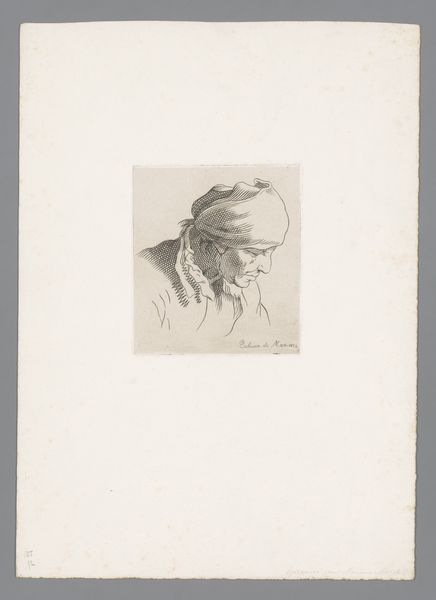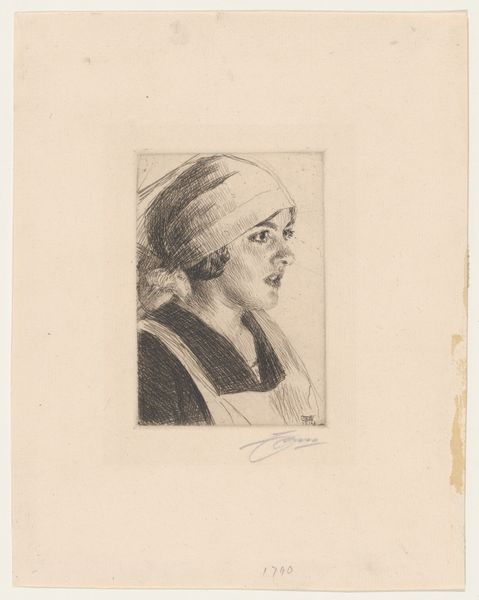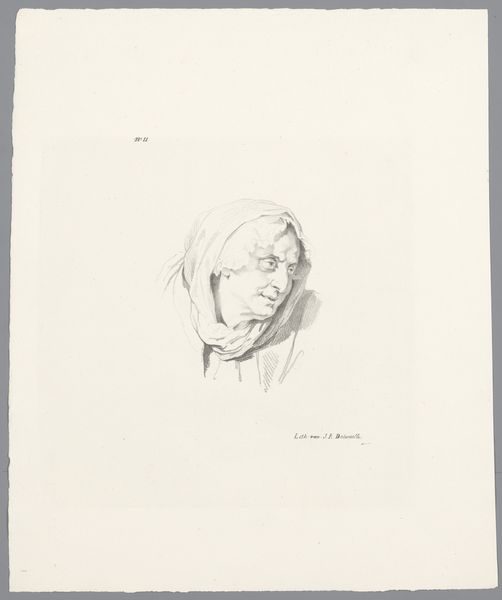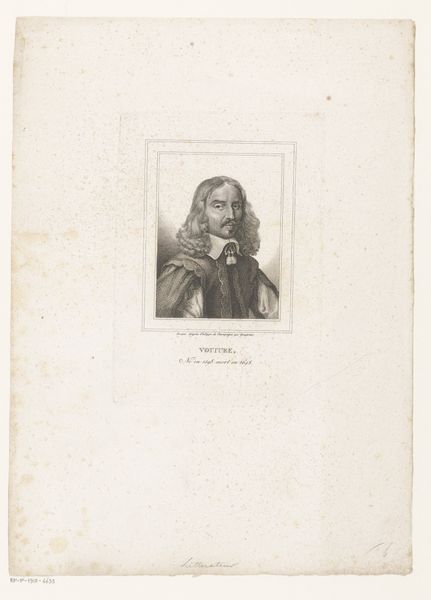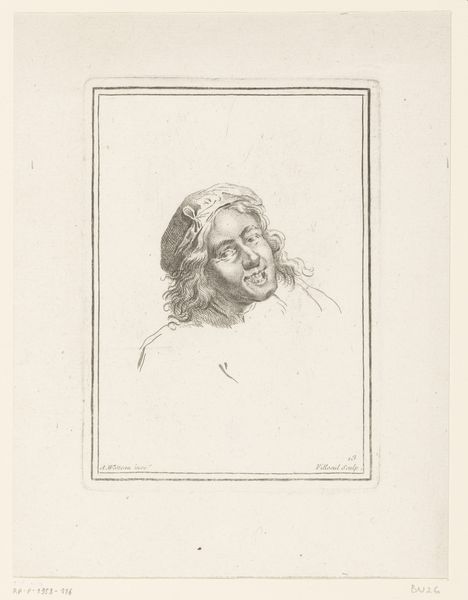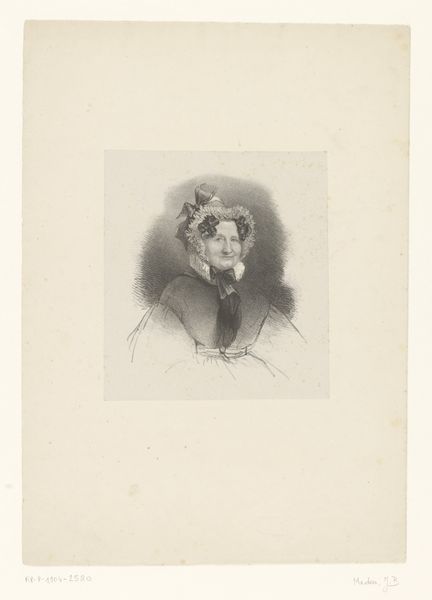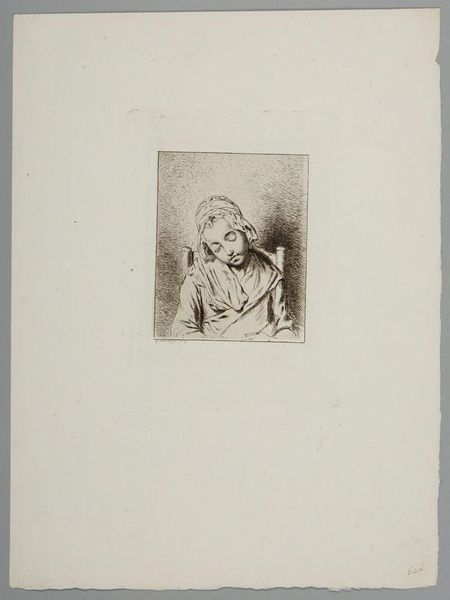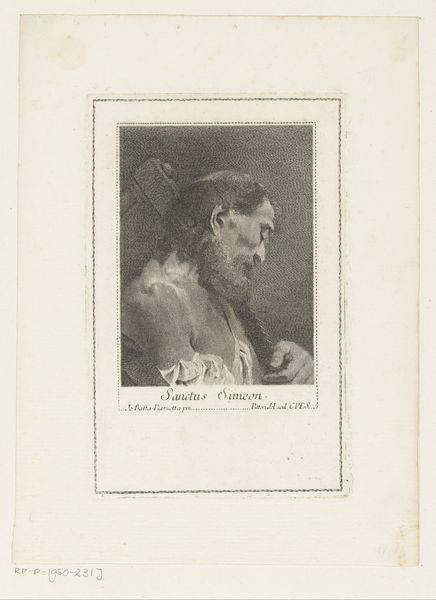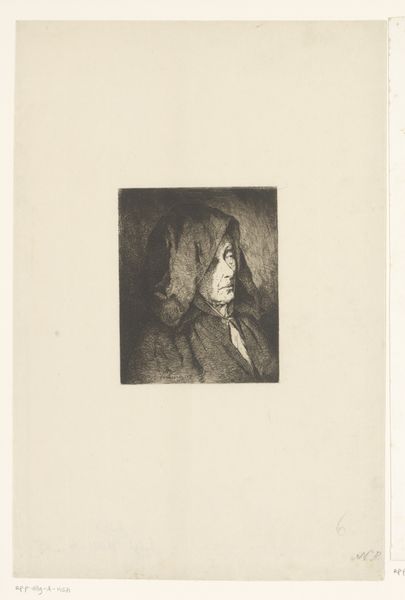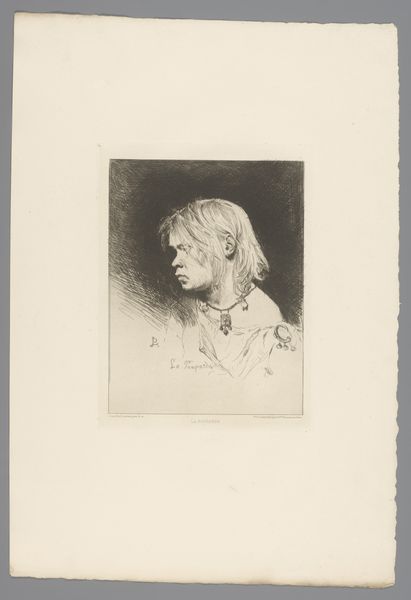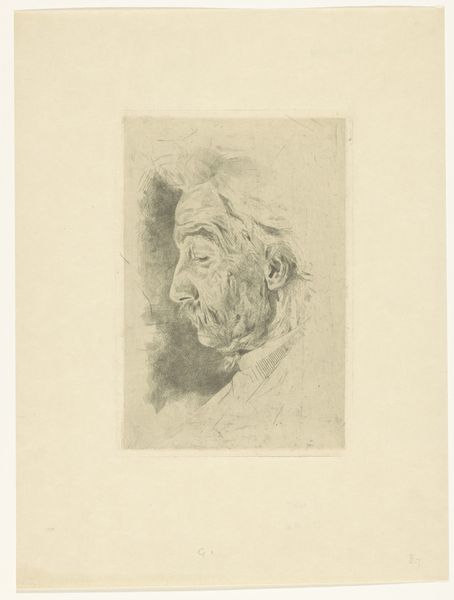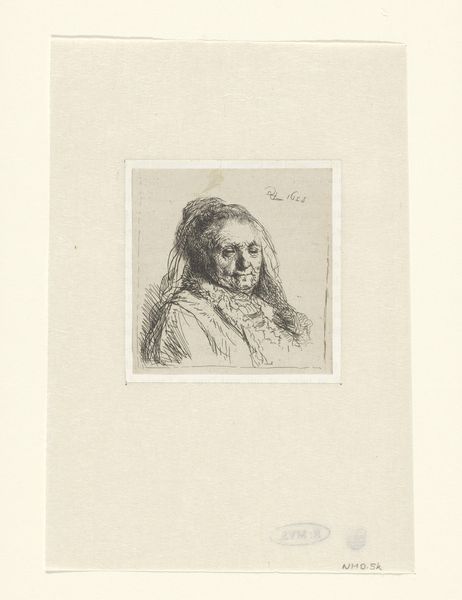
drawing, pencil
#
portrait
#
drawing
#
amateur sketch
#
light pencil work
#
shading to add clarity
#
pencil sketch
#
figuration
#
personal sketchbook
#
ink drawing experimentation
#
romanticism
#
pen-ink sketch
#
pencil
#
sketchbook drawing
#
pencil work
#
sketchbook art
Dimensions: height 340 mm, width 280 mm
Copyright: Rijks Museum: Open Domain
Editor: We're looking at "Biddende man," or "Praying Man," a pencil drawing made between 1820 and 1830 by Jean Augustin Daiwaille. It’s currently held at the Rijksmuseum. The mood feels quite solemn to me, intensified by the close-up view of the man. What do you notice, looking at this piece? Curator: Focusing on the formal elements, the most striking aspect is Daiwaille's use of light and shadow, wouldn't you agree? Notice how the face is sculpted through subtle gradations of pencil strokes. Observe how the artist utilizes hatching and cross-hatching techniques to define form and create a sense of depth, specifically in the folds of the drapery. Do you observe the effect of the white paper playing an essential part of the tonality? Editor: Yes, the contrast is so subtle and beautiful, like the paper itself is illuminated. I'm curious about his technique—why render it so softly, rather than a more dramatic contrast? Curator: The limited tonal range forces the viewer to observe closely and appreciate the texture and form. The composition creates a concentrated viewing experience on the central subject, namely, the human form and face, the structure of which the eye must actively work to uncover from the image. Are we not also meant to consider the man's emotional state in terms of aesthetic design? Editor: I see what you mean. The lack of stark contrast emphasizes the emotional introspection rather than a theatrical display. It makes it much more intimate. I hadn't thought of it like that before. Curator: Precisely. The emotional content becomes intrinsic to our analysis, considered not for its own sake, but as it appears within the carefully-controlled formal elements. It showcases a manipulation of the pencil medium. Editor: That’s a fantastic point! Seeing it as the balance between medium, subject, and artist's intention is really helpful. Thank you!
Comments
No comments
Be the first to comment and join the conversation on the ultimate creative platform.
